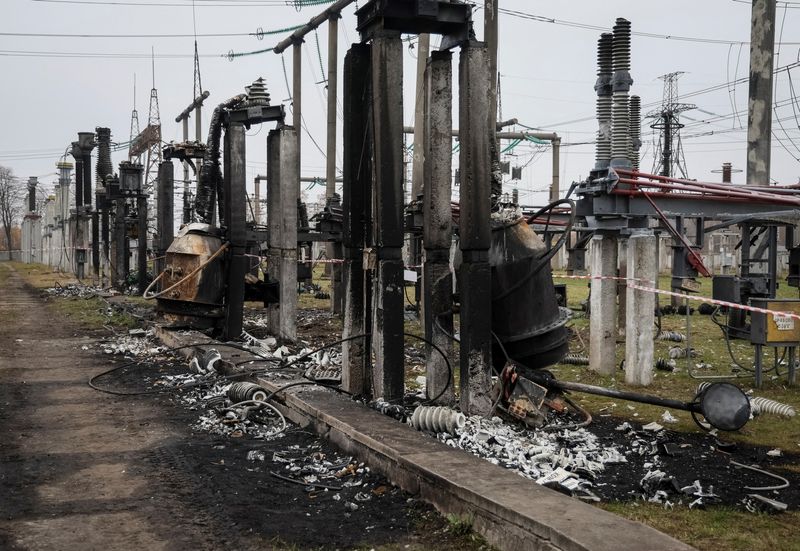
By Pavel Polityuk
KYIV (Reuters) – Ukraine and U.N. nuclear agency IAEA have agreed that the agency’s experts will monitor the situation at key Ukrainian substations in addition to nuclear plants, Ukraine’s chief nuclear inspector said on Thursday.
More than half of the electricity consumed in the country is generated at three nuclear power plants, but Russian missile and drone attacks on substations threaten the stable operation of nuclear power plants, Oleh Korikov told a televised briefing.
“It was agreed that IAEA would expand its functionality, its presence in Ukraine, and that electrical substations, which are important for the safety of nuclear power plants, would also be subject to international monitoring,” Korikov said.
The first visit of the monitoring mission to one of the substations would take place next week, he added.
Ukrainian authorities hope inspectors’ presence will prevent attacks on substations.
Rafael Grossi, Director General of the IAEA, is in Ukraine now and visited Zaporizhzhia nuclear power plant, which was seized by Russian forces soon after Russia’s February 2022 invasion.
Moscow and Kyiv have regularly accused each other of attacking the plant and risking a nuclear accident.
Ukraine’s energy infrastructure has been subjected to increased Russian missile and drone attacks in recent months and officials have said the country has lost about half of its generating capacity and now relies mainly on nuclear energy.
Moscow, which denies targeting civilians, says damaging Ukraine’s energy system is a legitimate military goal.
NUCLEAR POWER UNITS DISCONNECTED
The Ukrainian mission to the IAEA said last week that a Russian drone and missile attack in late August forced Ukraine to disconnect several nuclear power units from the grid, posing a risk to the nuclear power sector.
It said the attack was intended to paralyse the operation of power facilities.
“Russia, while not directly striking nuclear power plants, is threatening their safe operation through attacks on energy infrastructure facilities,” Korikov said.
As a result of Aug. 26’s attack, three out of four power units at the Rivne nuclear power plant in western Ukraine were disconnected from the grid, as was power unit 3 of the South Ukraine nuclear power plant.

Ukrainian nuclear power firm Energoatom this week said the capacity was reduced at one unit of the South Ukraine nuclear power plant after Russian attacks damaged the country’s Ukrenergo electricity transmission system.
It said the output was reduced after “hostile shelling of Ukrenergo’s infrastructure” and “significant fluctuations in the parameters of the grid”.
This post is originally published on INVESTING.


